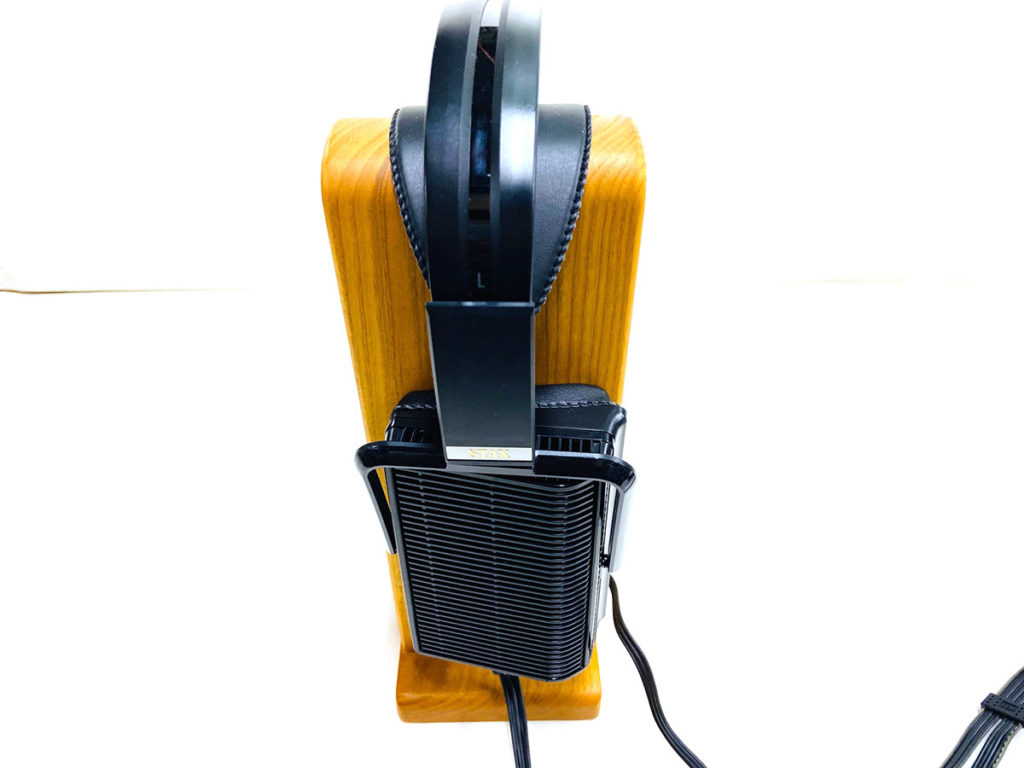As my grandmother used to say, you’re not a true audiophile until you’ve tried a Stax headphone. The famous Japanese company has been around for almost 40 years, producing electrostatic headphones before any headphone company could even spell elecristatic. Compared to their pricey flagship, the SR-009, the SR-L700 is one of their more reasonably priced headphones. What can we expect in terms of sound and design at this price point? Let’s take a look in this Stax SR-L700 Review.
Stax SR-L700 Review
FIT
These cans are extremely lightweight. And the sheepskin earpads, though not particularly thick, are soft and almost loose fitting on the ears. But the rectangular design is also long. And when I put them on, they almost seemed to slide down my ears. That is, I don’t think my ears were sitting in the center of the earcup. But the headband wouldn’t allow me to shorten the length any further. And though the L700 felt comfortable, the cups sat across my jawline. So, it was hard to forget that I was wearing them. But maybe I’m just in a sensitive mood. It’s that time of the month. Though the headband may not be short enough for me, bigger heads should appreciate the small increments of the 10-click slider mechanism, which was adopted from the SR-009. And although the headband felt a little rigid when adjusting, you should be able to find the exact fit for your giant head.
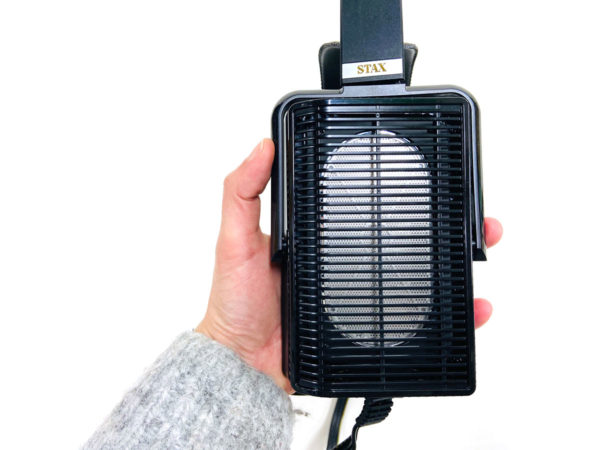

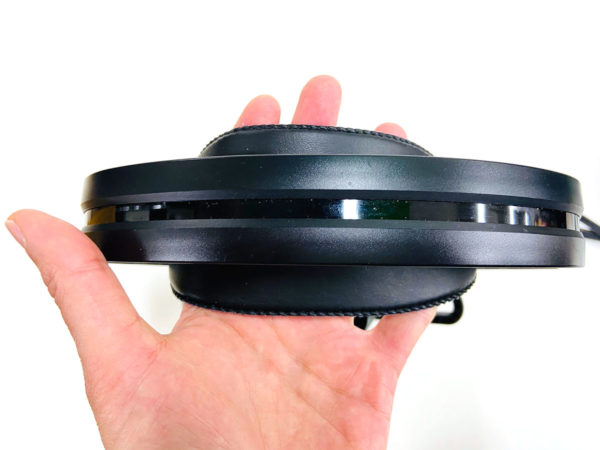
DESIGN
Yes, the earpads sport a very classy looking leather. But it’s hard to ignore the plastic earcups and headband. It just doesn’t scream “pricey.” I’m not sure whether Stax’s intention was to keep things light or to keep the headphone relatively inexpensive. Luckily these cans sound great, and that’s what counts.
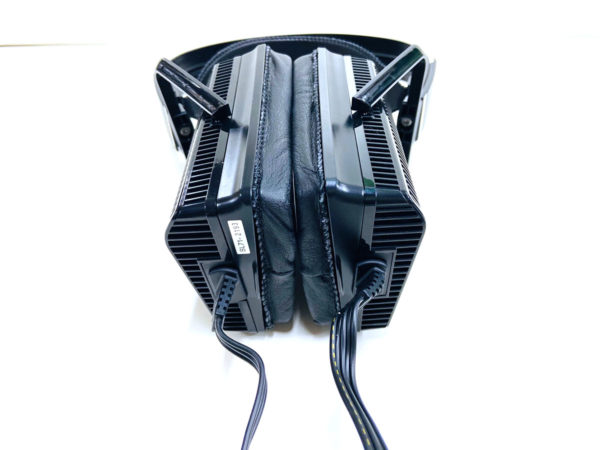
Like the SR-009, the L700 employs a thin-film diaphragm as well as fixed electrodes machined through three-layer stainless etching (using heat diffusion). Stax’s intention was to design the thinnest and strongest diaphragm material with the lightest and most powerful electrode array possible. For a little background information about electrostatic technology, check this out.
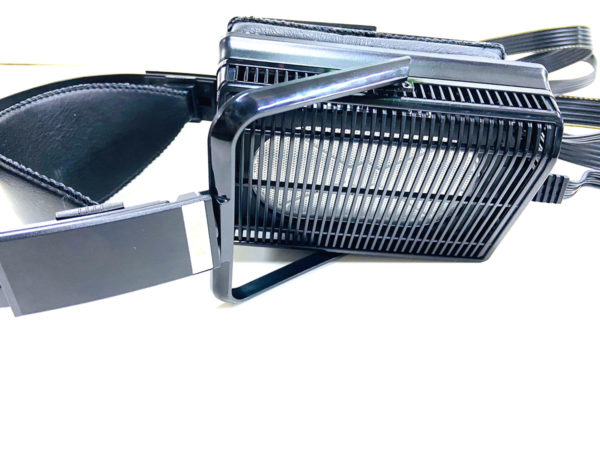 The cable (first version, non-detachable. Second version has detachable cable) uses 6N high-purity annealed copper wires with 6 silver-plated copper wires arranged at the perimeter. The cable has a wide parallel structure, which lowers the capacitance between the wire strands. And according to Stax, this improves the “freshness of sound.”
The cable (first version, non-detachable. Second version has detachable cable) uses 6N high-purity annealed copper wires with 6 silver-plated copper wires arranged at the perimeter. The cable has a wide parallel structure, which lowers the capacitance between the wire strands. And according to Stax, this improves the “freshness of sound.”
For the purposes of this review, I paired the L700 with the Stax SRM-D50 driver unit. And I connected the DAC to my mobile device and used Tidal MQA files.
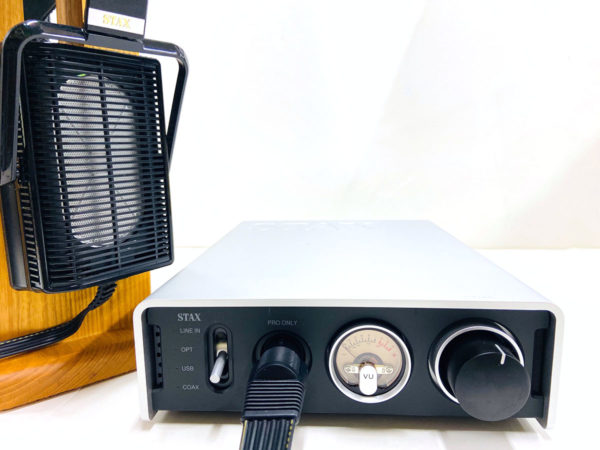
SOUND
Low Frequencies
The first thing to note is that the bass is fast, injecting crazy funk into, well…Funky ditties. Now, I heard many people complain about the bass not being substantial enough, escaping through the headphone and such. But to be honest, I didn’t find it particularly lacking. Sure, it may not have the low-end richness of an Audeze headphone. But for the most part, I got the oomph I was looking for when listening to pop tracks. And as the bass moved up the frequency spectrum, it gained a little grandeur. Rock songs presented sufficient low-end meat and warmth to satiate the senses as well.
Middle Frequencies
The midrange balance is one of the factors that makes the SR-L700 a very easy listening experience. The upper mids avoid emphasis, while the low-mids have sufficient presence. So, the mix sounds natural and full-bodied, and you won’t get any harshness or shout in the higher end of this range. The other quality that adds to the enjoyment of this sound signature is the fluidity. The profile has smooth feel while retaining a solid level of detail and resolve. And when you combine this element with the speed of these cans, it creates a powerful momentum, like driving fast in a heavy race car. The L700 is also very clean, though its profile avoids being thin. And tracks with heavy instrumentation have tidy layering, while maintaining a tastefully sumptuous flavor overall. Stevie Wonder’s “I Wish,” for example, brings out some of the best elements of the L700. Clean separation, speedy response and a “silky energy”.
High Frequencies
A little extension in this range, but it avoids becoming too bright. And this is coming from a snowflake who’s sensitive to high frequencies. I’m usually not a fan of Miles Davis when he hits the painful high notes, but even his peaks were a pleasure to listen to on these cans. Always smooth and never piercing. There’s also a delicate feel to the highs, which lends itself particularly well to classical pieces; strings in this range are handled tenderly and with some fineness, making for an highly emotive and lyrical performance.
Soundstage
Thanks in part to the impressive separation and speed, the imaging feels nicely spaced out even in the most convoluted of tracks. There’s nothing exaggerated about the instrument placement, so don’t expect an LSD trip. I didn’t start grabbing at piano keys above my head, for example. But it’s certainly precise and spacious enough to do justice to an open-back headphone at this price point.
PROS and CONS
Pros: Well balanced; fluid; fast; easy listening.
Cons: Plastic earcups and headband don’t look as classy as the headphone sounds.
FINAL THOUGHTS
Besides the questionable aesthetics, I really can’t file any complaints. Elegantly balanced, fast, refined yet realistic, and oh so sweet in the highs, these headphones are hard to take off. And in terms of skill, the SR-L700 certainly competes with (if not beats) the other greats in this price range. Of course, you’ll probably have to spend an extra grand on an amp to drive these cans. But if you value a truly melodious sound signature, you can’t go wrong with the SR-L700.
You can find the SR-L700 for the best price here:
Pre-order the SR-L700 (MK-2 New) at Audio 46
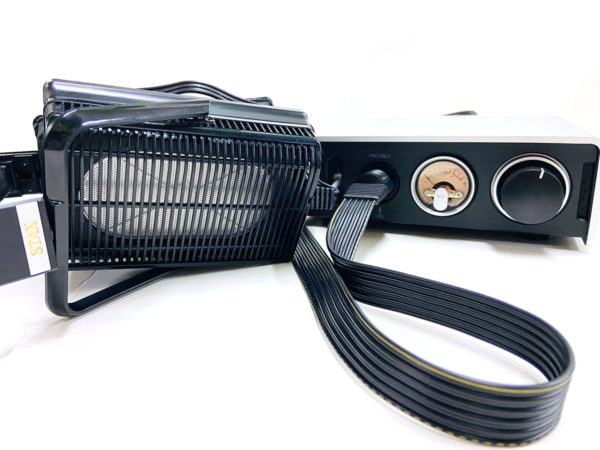
HeadphoneDungeon may receive commission through retail offers.

